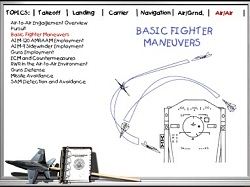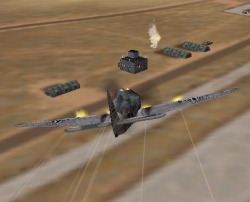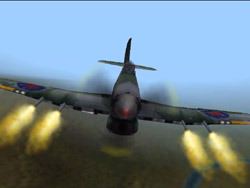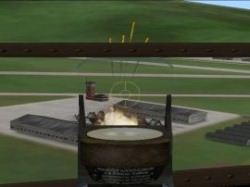| Fighter Squadron: Flight Model Update
by David Zurawski |
||||
|
How many times have we waited in anticipation for the new simulation where advertisements boast claims of "ultra-realistic" flight-models that don't stand up under scrutiny? Fighter Squadron: Screaming Demons Over Europe is one of the most recent simulations to suffer the indignity of exagerrated claims. Before you write off FSSD as a failure, however, all is not lost. In an unprecedented effort, Michael Harrison (Senior Software Engineer for Parsoft) has undertaken the daunting task of rebuilding the flight models of the complete list of shipped aircraft. To further exemplify his passion, he is doing this primarily on his own time. In the following article, I will pass along what I've since learned from Michael regarding what is missing, what is being done and how it will affect this simulation, as we know it. What's the big deal about accurate flight models? To many this is an obvious question with an even more obvious answer. But the truth is there are surprisingly quite a few first-time sim'ers, who simply echo what they hear online and in forums without fully understanding what they're hearing.  One of the most important aspects of ACM (air-combat maneuvering) is knowing the limitations of your aircraft and your opponent's aircraft. This knowledge dictates how you will engage, attack and defend yourself from your opponent. If a simulation's flight-model does not properly depict a given aircraft's performance accurately, you've effectively removed virtually all the strategy from the simulation. Doing this to a sim flight model is the equivalent of changing all the pieces of a chess game into queens, or playing the game without any rules. What's really wrong with the FSSD flight-models?
 Most of the complaints and observations from the flight-sim community focus primarily on the lack of proper departure from flight. In actuality, stalls in FS are already present; it's the repercussions of exiting the stall that are missing. Currently when you do get into a stall situation you are welcomed with a soft and very manageable recovery. Other issues, such as lack of proper bleeding of speed during climbs or flat turns, were corrected by the release of the 1.5 patch in which the viscosity of the air was increased to better facilitate drag. |
 The reasoning for the flight departure problem is best answered by a paragraph I received from Michael Harrison. "The airfoil data that was generated had spikes in it (presumably to simulate the turbulence that is typical during stalls) and the lift did not drop off fast enough in the stall region. This meant that it was difficult to get into a true stall. "Furthermore, the weight distribution on the planes was off, causing the "center of gravity" to be too far forward. This would aid the aircraft in stall recovery, which is unrealistic." To simplify... the generated data that was manipulated to induce stalling did not have a long enough "occurrence" to allow the aircraft to lose enough lift to enter a proper stall condition. That coupled with the fact that the "center of gravity" was off, allowed the planes to automatically "nose-over", causing an overly easy stall recovery.

Fine … How to fix it? To better answer that question, let's discuss Fighter Squadron's flight-model and how it works. Fighter Squadron's flight-model derives its data from a CFD program Parsoft licensed from NASA. With this program, airfoils (simple aerodynamic shapes that develop lift) are placed within a liquid-dynamic environment and fluid is run over the surfaces to determine their lift values. Tables of lift, drag and moment (with optional modifiers for leading and trailing edge devices) are used to parameterize each airfoil. This data then is inserted into a specific airplane's LOD file, (a file that contains all the aircraft's specific data) which in turn provides us with the given flight-model, as we know it. Obviously once this raw data is obtained, much of it can be manipulated and "tweaked" to accurately match known aircraft specifications. Go to Page Two of Two
|
|||
|
Copyright © 1997 - 2000 COMBATSIM.COM, INC. All Rights Reserved. Last Updated June 1st, 1999 |
||||
